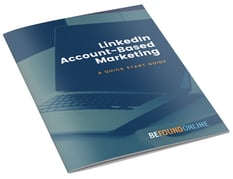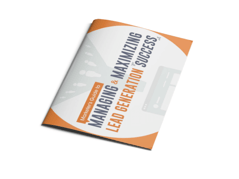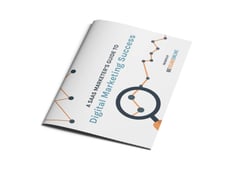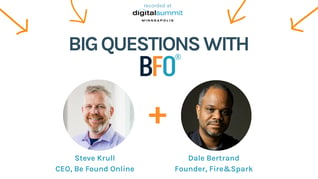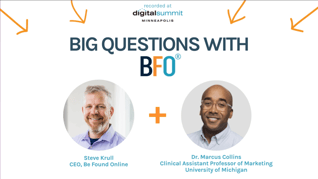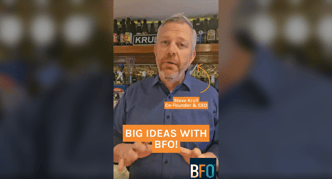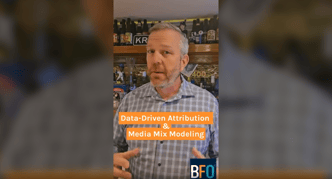Microsoft UET Consent Mode: What You Need to Know
April 21, 2025
7 Minute Read

If you’ve been keeping an eye on data privacy trends the last few years, you know that balancing effective advertising with stringent data privacy regulations is becoming more and more crucial, even if it’s not an easy feat to pull off. We’ve already written about Google Consent Mode, but Microsoft's Universal Event Tracking (UET) Consent Mode is another privacy solution worth covering, enabling businesses to align data collection with user consent preferences, all while complying with regulations (think GDPR and ePrivacy Directive).
regulations (think GDPR and ePrivacy Directive).
If you're already familiar with Google Consent Mode, you'll be relieved to know that Microsoft UET Consent Mode works similarly. Together, they ensure your advertising stays effective while respecting user privacy across both platforms (a double win!). The key difference to consider is that, while Google Consent Mode utilizes multiple variables for more granular control over consent preferences (ex. ad_storage, ad_personalization and analytics_storage), Microsoft Consent Mode relies solely on ad_storage to either grant or deny consent. We’ll jump into that a little deeper below (spoiler: it’s gonna get technical).
What Is Microsoft UET Consent Mode?
Introduced in July 2023, Microsoft's UET Consent Mode allows advertisers to modify UET tag behavior based on users' consent choices. By dynamically adjusting data collection settings based on user inputs, businesses can beef up their compliance efforts without sacrificing critical tracking capabilities.
At the core of UET Consent Mode is the ad_storage parameter, which directs cookie handling. When a user provides consent, the value is set to granted. This allows the reading and writing of both first-party and third-party cookies. If a user instead chooses to opt out of data collection, the value is set to denied. Cookie access is then restricted, preventing cookies from being read or written. It’s all about ensuring the user knows what’s being done with their data, as well as giving them the option to opt out on their own.
According to the requirements set by the Digital Services Act (DSA) and the Digital Markets Act (DMA), by default, the ad_storage parameter should be set to denied in regions such as the European Economic Area (EEA), Switzerland, and the UK. This ensures compliance from the outset. Here at BFO, we recommend staying up to date with digital privacy laws as the list of regions may expand as data privacy legislation continues to evolve. It can be a bit much to keep up on, but we know a great agency that can do it for you (wink wink).
Integrating with Consent Management Platforms (CMPs)
For streamlined consent management, integrating UET Consent Mode with a Consent Management Platform (CMP) is recommended. CMPs collect user consent and automatically adjust tracking behaviors accordingly. Popular CMPs that support UET Consent Mode include:
- OneTrust (BFO is certified!)

- Cookiebot
- Iubenda
- Consent Manager
- Google Tag Manager (GTM) can also be utilized to integrate most CMPs and relay consent signals.
Implementing UET Consent Mode via a CMP ensures a seamless approach to privacy compliance while maintaining tracking accuracy, as they support standardized data management processes which help automate data subject requests, identity verification, data deletion and redaction.
The Benefits of Implementing UET Consent Mode
If you're over there thinking, "Aside from compliance and all this technical stuff, but I don't see how this benefits my business," we've got you:
Enhanced Compliance Without the Guesswork
Data privacy compliance can be daunting (which I’m sure you know if you’re reading this blog), but UET Consent Mode makes it easier by ensuring that data collection aligns with user consent. When users grant permission, tracking functions as intended. When they opt out, Microsoft automatically restricts data collection, helping businesses meet legal requirements effortlessly. This built-in compliance framework mitigates risk, grants transparency, and reinforces trust with your audience.
More Reliable Data for Smarter Decision-Making
By only collecting data from users who have actively given their consent, advertisers gain access to a much more accurate view of meaningful insights. Unlike traditional tracking methods that rely on broad data collection, UET Consent Mode ensures that the information you gather truly reflects engaged and consenting users on your website. This leads to cleaner analytics, stronger reporting, and better-informed marketing strategies, all without compromising user trust.
Privacy-Conscious Tracking That Maintains Ad Performance
One of the biggest concerns advertisers have with privacy-focused changes is the potential impact on ad performance (we get it, there’s budget behind those campaigns!). Fortunately, Microsoft UET Consent Mode allows businesses to continue tracking conversions and running remarketing campaigns while remaining within the constraints of privacy regulations. By leveraging modeled conversions and alternative tracking methods, advertisers can still optimize their campaigns while respecting user preferences. This creates a privacy-first approach that doesn’t sacrifice campaign success!
Key Considerations and Challenges
While UET Consent Mode helps with compliance, there are a few considerations to keep in mind. First and foremost, it’s important to clearly inform users about the data you collect, its purpose, and the amount of time you’re storing it. Such transparency not only fosters trust, but in many cases, it is required.
Additionally, even with consent mode enabled, certain types of cookieless data may still be collected. Of course, ensure that these practices are disclosed and assess their compliance with relevant regulations. A final consideration, data protection laws vary across jurisdictions. Tailor your consent management processes to align with the specific requirements of each region in which you operate. Familiarizing yourself with legislation in the places you do business will help determine whether or not your business is held liable to a region’s data privacy laws, as this may vary based on industry, site traffic, and user type, among other factors.
Why Does Microsoft Advertising Require Consent Mode for UET?
You read that headline correctly - Microsoft Advertising now mandates that advertisers using UET provide user consent signals. Businesses can comply by implementing either Consent Mode for UET or the IAB Transparency and Consent Framework (TCF).
Failing to employ either Consent Mode or TCF will result in Microsoft stopping UET-based conversion tracking and population of remarketing lists, which could result in the loss of targeting capabilities, decreased campaign efficacy, and/or limited insights on your user behavior.
To prevent this, businesses should implement either Consent Mode for UET or TCF as soon as possible.
Choosing Between Consent Mode and TCF
According to Microsoft, businesses should use only one method (Consent Mode or TCF) based on their compliance needs. While Consent Mode for UET adjusts Microsoft tags according to user consent signals, ensuring accurate conversion tracking, TCF is a broader, standardized framework by IAB Europe which relies on CMPs to manage user consent and create a "TC string" that contains information about user preferences (sorry, we told you this was going to get technical). The TC string is then passed to different vendors, including Microsoft Advertising, which can use it to adjust their behavior.
Regardless of the approach, proper implementation is necessary to maintain data integrity and ad performance.
It's Time to Get Set Up!
Adapting to Microsoft’s UET Consent Mode is essential, not optional. Implementing either Consent Mode for UET or TCF ensures compliance, preserves tracking capabilities, and maintains ad performance. As data privacy laws continue to evolve, it’s more important now than ever to stay on top of these changes to make sure your business keeps finding success online.
If you haven’t yet configured your UET setup to align with Microsoft’s requirements, now is the time to act and avoid potential disruptions to your Microsoft Advertising campaigns. Ask BFO how we can help!
Want a monthly dose of digital marketing news & tips? Subscribe to the BFO newsletter:

Lauren San Gregory
Lauren graduated from Bowling Green State University with a Bachelor’s in marketing, and minors in Advertising + Entrepreneurship. She is currently in school for my MBA in Data Analytics. Her favorite platforms to advertise with are Google, Wayfair and Amazon. Her favorite thing about working with clients is learning about new industries and products. For example, after working with a sink company, she’s now well versed on sinks and faucets (which has turned out to be surprisingly useful day-to-day). Outside of work, Lauren loves to bake (she makes a mean cream-cheese-filled vanilla bean scone). She loves thrifting, hiking, going to concerts and taking her cat to the beach (as Curtiss likes to point out any chance he can get). An interesting fact about Lauren is that she is going to Italy next year to claim her citizenship (her Dad’s side of the family is Italian).
CATEGORIES
SUBSCRIBE TO OUR BLOG
Stay up to date with the latest industry best practices in digital marketing!













.png?width=339&height=179&name=Webinar%20Banner%20(1).png)

.png?width=339&height=179&name=July%20Webinar%20(Newsletter).png)
.png?width=339&height=179&name=Webinar%20Banner-April-02%20(1).png)
%20(4).png?width=339&height=179&name=Webinar%20Banner-May-02%20(1)%20(4).png)


.png?width=339&height=179&name=March%202023%20Webinar%20Ad%20(autoresponder).png)
